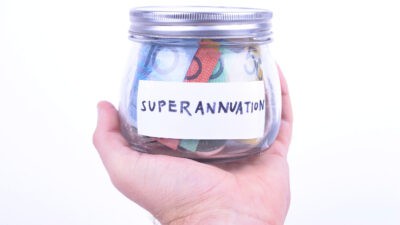Superannuation has been at the centre of political debate over the past few years in Australia. Even though the system is world-renowned and appreciated by most Australians, debate continues to rage over potential improvements. Much of this debate has been centred on the already legislated scheduled increases to the super guarantee. That's the mandatory proportion of a worker's wage that is quarantined for super.
Since its inception in the early 1990s, the super guarantee has risen from 3% to the current rate of 9.5%. As it stands today, the guarantee is set to rise by 0.5% at the start of every financial year until reaching 12%. The first of these scheduled rises will occur on 1 July this year and will push the guarantee to 10%.
According to reporting in the Australian Financial Review (AFR) today, the government has said that it will make a final decision on whether to allow this move to go forward before it hands down the budget in May. The Labor Party opposition is backing the move to 12%.
To rise or not to rise
Bumping up the super guarantee to 12% is controversial for several reasons. Firstly, some businesses argue that they can't afford a compulsory rise in the super payments, due to the ongoing economic uncertainty induced by the coronavirus pandemic.
Others argue that Australians would be worse off, seeing as any increase in the guarantee would come at the expense of wages growth. Some politicians are even arguing that the money could instead be better used to help workers get onto the property ladder. Or pay off their mortgages faster for retirement.
On the other hand, proponents of the move say the increase is much-need and long overdue. The Abbott government already postponed the move to 12% back in 2014. Part of these arguments rests on the assumption that the current rate of 9.5% is not enough to ensure a comfortable retirement for the average Aussie worker in itself. That would result in a continued reliance on the government age pension. The superannuation system is designed to reduce pressure on the pension system.
The AFR reports that Industry Super Australia estimates that ditching the legislated increase to 12% will add $33 billion to the cost of the aged pension in 2058. It also estimates it will cost a couple, currently aged 30, more than $170,000 in retirement.
It's a vexing debate, as you might imagine.
Poll shows support for 12% super
But Aussies tend to be coming down pretty hard on one side, if the results of a poll on the matter are to be believed.
According to the AFR report, a UMR Strategic Research poll was commissioned by Industry Super Australia Group on the matter. This poll found that two-thirds of those surveyed said they supported the rise in the super guarantee from 9.5% to 12%.
However, the results are a bit more nuanced than that headline figure. The poll also showed that "nearly half" of those surveyed also said they would choose to take the extra money upfront in their take-home pay if allowed. Even so, 71% of those surveyed also said "that option should not be available because high super balances were more important long term."
Interestingly, the poll told participants of the beneficial tax treatments that super payments are entitled to. Considering this, 60% of respondents "viewed any move to stop the SG rate increase as a 'tax grab' by the government."
Under a third of those surveyed said that the government should dump the increases altogether. "Getting more people in work is more important than increasing the super rate" was the reason given for this view.
Regardless of the poll results, we can probably expect the debate to continue to heat up until the government makes its decision closer to the budget. Even if the government does decide to ditch the scheduled rise to 12%, there is no certainty that this change has the numbers to pass through parliament anyway at this stage. So stay tuned!









